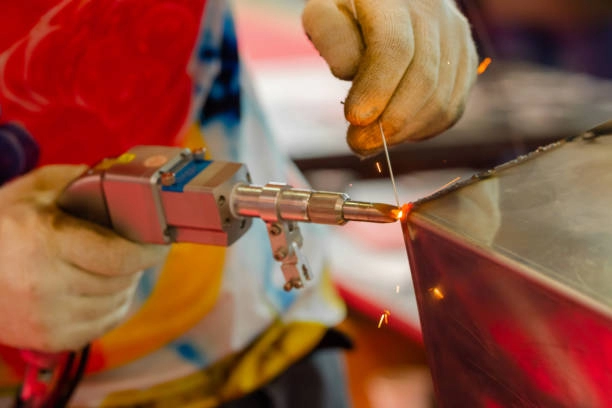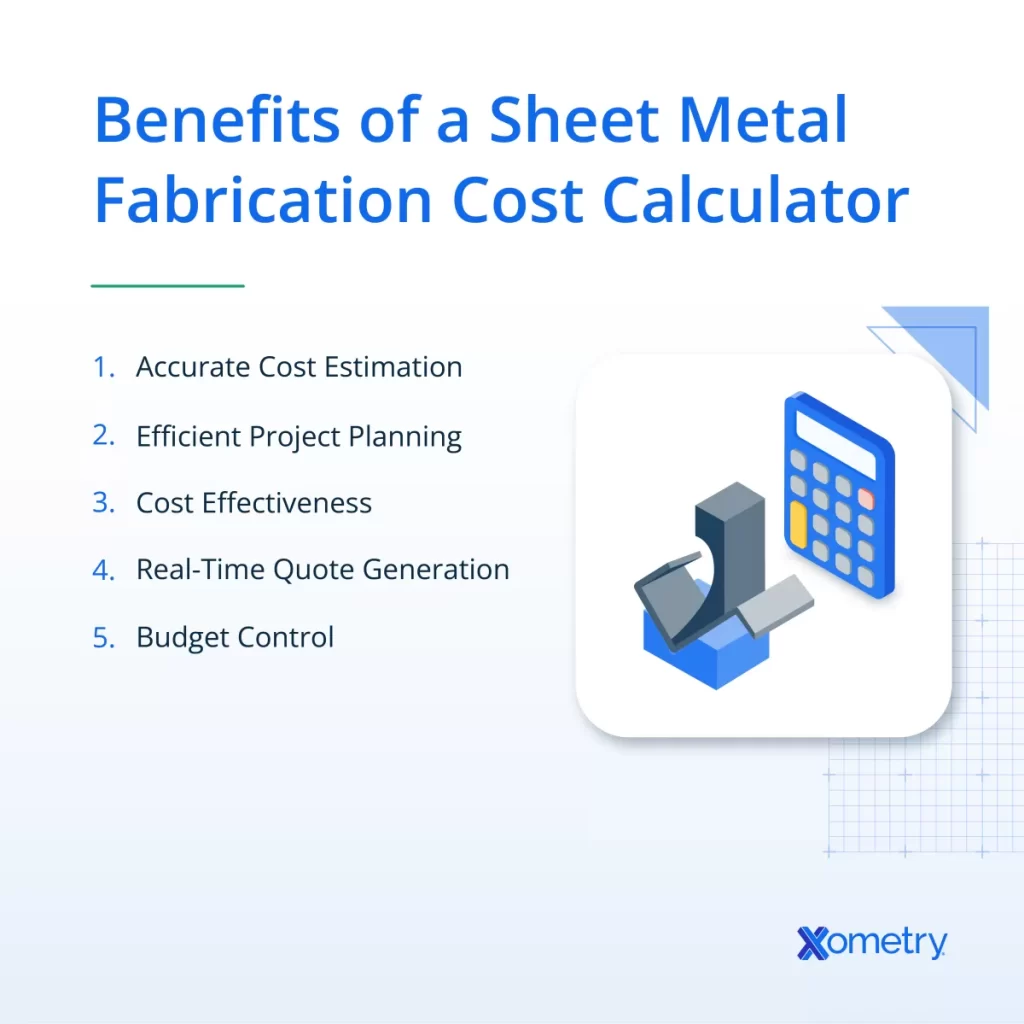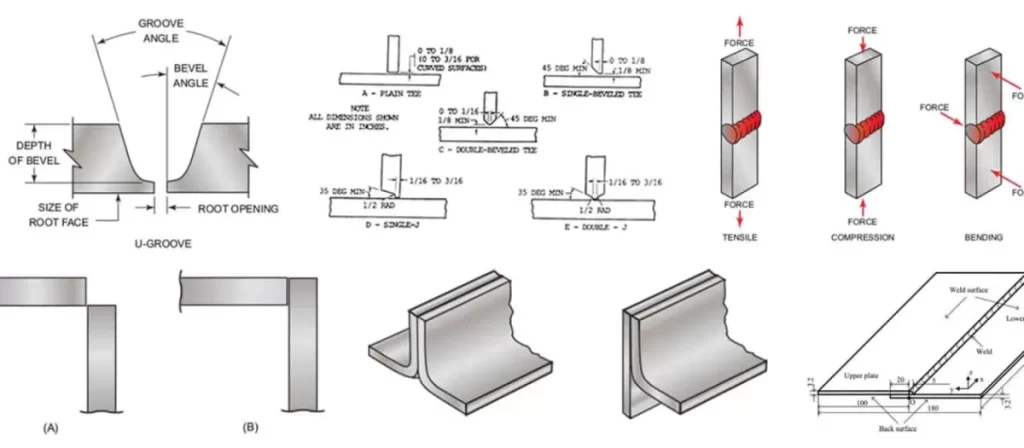Are you battling welding defects that threaten the quality of your projects? Identifying and preventing weld imperfections can transform your manufacturing process, ensuring stronger, safer, and more reliable components.
As experts in CNC processing and precision welding, we at HYCNC know that flawless welds are critical for success in industries like automotive, aerospace, and construction. Drawing from our real-world experience, we’ve crafted this guide to demystify welding defect types, their causes, and proven solutions.
In this post, you’ll discover the most common weld imperfections, practical tips to avoid them, and how HYCNC ensures top-tier weld quality for your projects.
Ready to elevate your welding game? Let’s get started!
What Are Welding Defects
Welding defects are flaws or irregularities that occur in the welding process, affecting the quality and integrity of the weld. These defects can be classified as either imperfections or discontinuities. An imperfection refers to any minor deviation from the ideal weld shape or surface, while a discontinuity is a break or interruption in the weld metal or joint, which can weaken the overall structure.
Understanding welding defects is crucial because they directly impact safety, durability, and project costs. Defective welds can lead to structural failures, posing serious safety hazards. They also shorten the lifespan of the welded component and increase repair or replacement expenses.
Welding defects fall into two main categories: external and internal. External defects are visible on the surface of the weld, such as cracks or undercuts. Internal defects, on the other hand, occur inside the weld or the base metal, like slag inclusions or incomplete fusion, which are harder to detect but just as critical.
To maintain weld quality and reliability, industry standards such as ISO 6520 and the American Welding Society (AWS) guidelines provide classifications and acceptance criteria for welding defects. These standards guide welders and inspectors in identifying types of defects and ensuring welds meet safety and performance requirements.
Common Types of Welding Defects
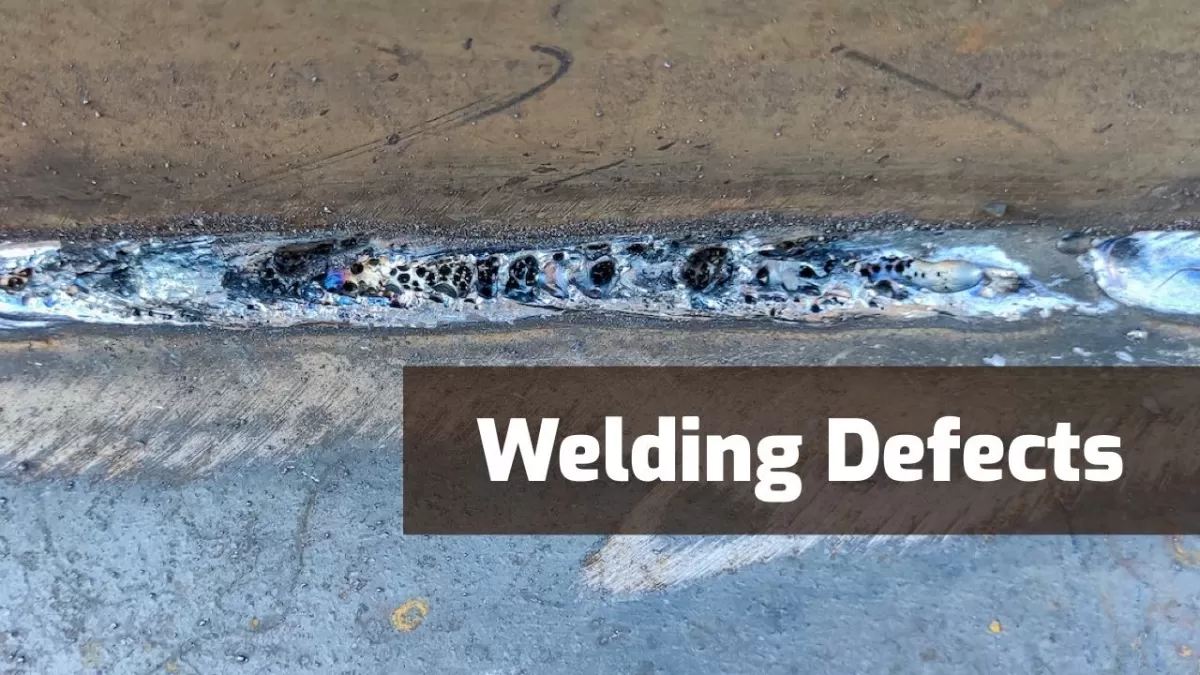
Welding defects generally fall into two main categories: external and internal imperfections. Knowing these can help you catch issues early and avoid costly repairs.
External Weld Imperfections
- Cracks: These are serious and can appear as hot cracks (from cooling too fast), cold cracks (forming after cooling), crater cracks (at weld stops), toe cracks (where the weld meets the base metal edge), or root cracks (deep in the joint).
- Undercut: A groove or notch at the weld toe caused by too much heat, weakening the joint.
- Porosity: Tiny gas pockets trapped inside the weld metal that reduce strength.
- Spatter: Small metal droplets that splash around the weld, leading to rough surfaces and extra cleanup.
- Overlap: Happens when molten metal flows over the base metal without properly fusing, creating weak spots.
Internal Weld Imperfections
- Incomplete Penetration: Weld metal doesn’t completely reach the root of the joint, resulting in a weak connection.
- Incomplete Fusion: The weld metal fails to bond fully with the base metal or earlier weld passes.
- Slag Inclusions: Non-metallic materials like flux remnants get trapped inside the weld, causing brittleness.
- Whiskers: Small electrode wire bits remain embedded in the weld, compromising integrity.
Other Welding Defects
- Arc Blow: Magnetic interference that makes the welding arc unstable and causes uneven weld beads.
- Burn-Through: When excessive heat creates holes through the base metal, weakening the structure.
Understanding these common defects helps ensure you inspect and address issues efficiently, leading to stronger, safer welds.
Causes of Welding Defects
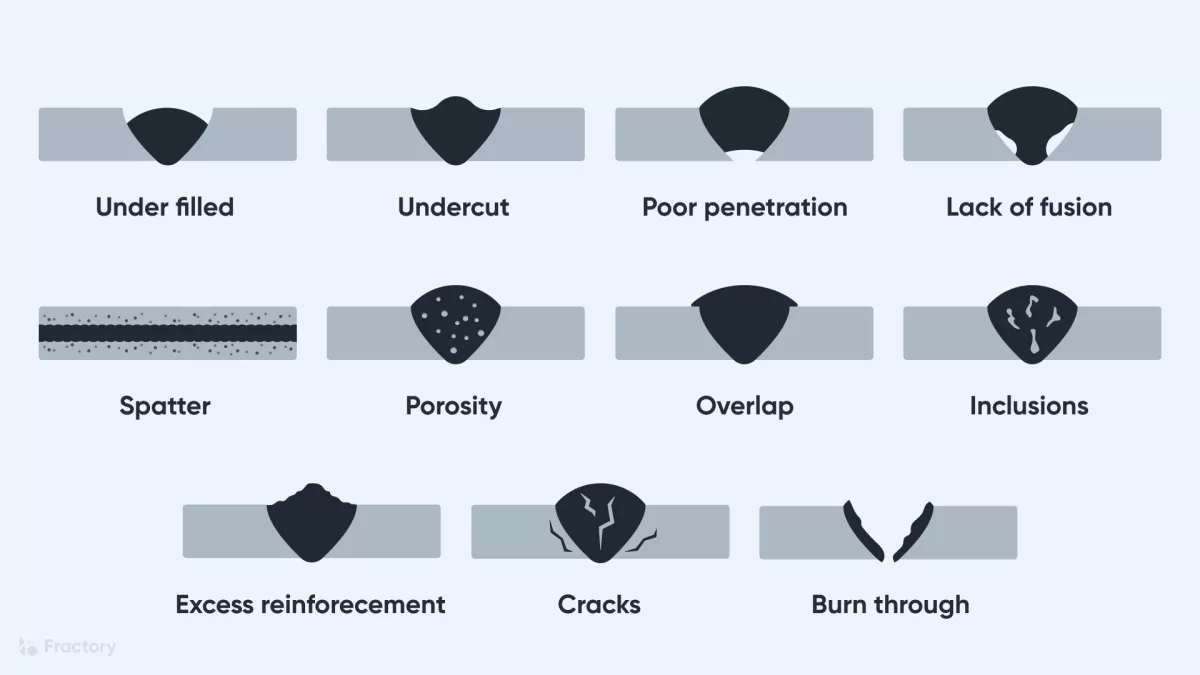
Welding defects can happen for a bunch of reasons, but they mostly fall into a few main categories:
Human Factors
- Poor welding technique or a lack of proper training often leads to mistakes.
- Using the wrong electrode angle or inconsistent travel speed can mess up the weld quality.
Equipment Issues
- Machines set with improper settings—like too high current or too low weld force—can cause defects.
- Using faulty electrodes or bad welding wire also creates problems in the weld.
Material and Environmental Factors
- If the base metal or filler material is dirty or contaminated, that dirt ends up in the weld.
- Not enough shielding gas or interference from wind and moisture can cause porosity and weak spots.
Process-Specific Issues
- Different welding processes like GMAW, SMAW, and FCAW each have their quirks, and improper handling can cause unique defects.
- Skipping or doing a poor preheating or improper post-weld heat treatment can result in cracks or weak joints.
Understanding these causes helps us improve weld quality and prevent defects before they happen.
How to Detect Welding Defects
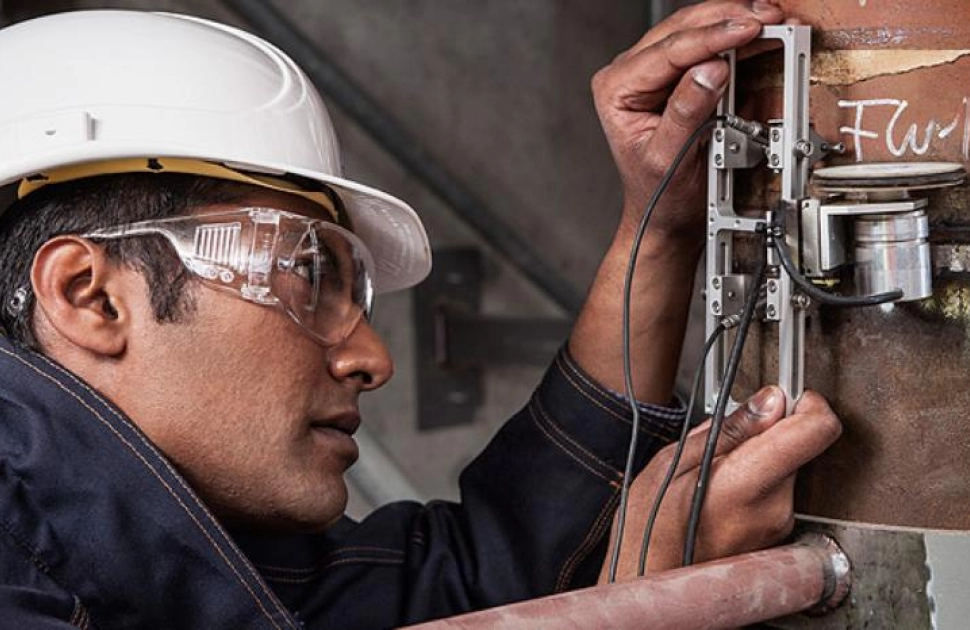
Detecting welding defects early is key to making sure your welds are safe and strong. There are several methods used, ranging from simple visual checks to advanced technologies.
Non-Destructive Testing Methods
These tests inspect welds without damaging the material, so you can catch issues before the weld is put to use.
- Visual Inspection: The first step—looking for obvious signs like cracks, porosity, or undercuts with the naked eye or magnifying tools.
- Magnetic Particle Inspection (MPI): Uses magnetic fields to find surface and near-surface cracks, especially in ferromagnetic materials.
- Dye Penetrant Inspection (DPI): Applies a liquid dye to reveal surface flaws by seeping into cracks and showing them under UV light.
- Ultrasonic Testing (UT): Sends sound waves through the weld to detect internal defects like incomplete fusion or slag inclusions.
- Radiographic Testing (RT): Uses X-rays or gamma rays to create images of the weld’s internal structure, ideal for spotting cracks and porosity.
Destructive Testing Methods
Sometimes welds are purposely broken or stressed to check their strength.
- Tensile Testing: Pulls the weld apart to measure how much force it can handle.
- Bend Testing: Bends the welded piece to see if it cracks or fails.
- Acid Etch Testing: Uses chemicals to etch the weld zone and reveal defects not visible on the surface.
Advanced Technologies
Modern tools make inspection more precise and efficient.
- Real-time Weld Monitoring with Cameras: Systems like Xiris Weld Cameras watch the weld as it’s made, catching defects instantly so corrections can be made on the spot.
- Audio and AI Tools: New software listens to the welding process, using artificial intelligence to detect inconsistencies and possible defects automatically.
HYCNC’s Approach to Weld Inspection
At HYCNC, we combine trusted testing methods with the latest tech to ensure top weld quality. Our CNC processing service integrates advanced inspection so any imperfection is caught early. This commitment helps deliver stronger, defect-free welds for industries that can’t afford compromises.
Preventing Welding Defects Best Practices
Preventing welding defects starts well before the torch sparks. Here’s how to keep your welds strong, clean, and reliable.
Pre-Weld Preparation
- Clean Materials: Dirt, rust, oil, or paint can mess up a weld. Make sure your base metal and filler materials are spotless.
- Proper Fit-Up: Tight and accurate joint fit-up avoids gaps or misalignment that cause defects.
- Right Filler and Shielding Gas: Picking the right filler metal and shielding gas for the job helps prevent porosity and weak spots.
Optimizing Welding Parameters
- Adjust Current and Voltage: Too much heat causes burn-through; too little leads to incomplete fusion. Tweaking these ensures the perfect weld pool.
- Travel Speed: Move too fast, and you might get incomplete penetration; too slow, and you risk excessive heat buildup.
- Electrode Alignment and Size: Proper electrode angle and size offer better control and reduce issues like undercut or overlap.
Training and Certification
- Skilled welders make a world of difference. That’s why HYCNC prioritizes working with certified professionals who understand weld quality inside and out.
Post-Weld Treatments
- Heat Treatment: Helps relieve stress and improve weld toughness.
- Grinding or Rewelding: Fixes minor surface defects and strengthens weak spots before final use.
Leveraging Technology
- Automated welding systems bring consistency and precision you just can’t beat with manual methods.
- At HYCNC, we pair this automation with CNC precision, ensuring defect-free welds every time — perfect for tight tolerances and high-demand industries.
Taking these steps seriously lowers the risk of welding defects, saving you time and money while boosting safety and durability.
The Role of HYCNC in Ensuring Weld Quality
At HYCNC, we specialize in CNC processing and welding services designed to deliver top-notch weld quality every time. Using advanced CNC technology, we ensure precise control over the welding process, which significantly reduces common welding defects like cracks, porosity, and incomplete fusion. Our automated systems maintain consistent heat and travel speeds, minimizing human error and improving overall weld integrity.
We’ve successfully partnered with clients in the automotive and aerospace industries, where defect-free welds are a must. Our precision CNC welding has helped these sectors meet strict safety and durability standards, proving our capability in handling high-stakes projects.
If you’re looking for dependable, accurate, and high-quality welding solutions, partner with HYCNC. Our focus on cutting-edge technology and expert craftsmanship will help you avoid costly defects and enhance your product’s performance.
FAQs About Welding Defect Types
What Are the Most Common Welding Defects
The most common welding defects include cracks (hot, cold, crater, toe, and root cracks), porosity (gas pockets trapped in the weld), undercut (grooves at the weld toe), slag inclusions (non-metallic material caught inside the weld), incomplete fusion, and spatter (metal droplets outside the weld area). These defects can weaken the weld and affect its durability and safety.
How Can Welding Defects Be Prevented
Preventing welding defects means:
- Properly preparing materials by cleaning and fitting them correctly
- Using the right filler metals and shielding gas
- Adjusting welding parameters like current, voltage, and travel speed
- Ensuring welders are trained and certified
- Using modern technology like automated welding systems for better consistency
- Performing post-weld treatments such as heat treatment or grinding to fix minor flaws
What Is the Difference Between a Discontinuity and a Defect
A discontinuity is any interruption in the normal weld structure, like porosity or minor surface irregularities, which may or may not affect performance. A defect is a discontinuity that is severe enough to reduce the weld’s strength, safety, or usability—these always need to be fixed.
How Does HYCNC Ensure Weld Quality in CNC Processing
At HYCNC, weld quality is a top priority. We use CNC precision machining to maintain tight tolerances and consistent welds. Our skilled team applies strict weld quality control, leveraging advanced inspection methods and certified processes. This approach helps us minimize welding defects and deliver strong, reliable welds tailored for industries like automotive and aerospace.
What Testing Methods Are Best for Detecting Internal Weld Defects
Internal weld defects are best found with non-destructive testing (NDT) methods such as:
- Ultrasonic Testing (UT) to detect cracks or incomplete fusion inside the weld
- Radiographic Testing (RT) which uses X-rays to spot hidden flaws
- Magnetic Particle Inspection (MPI) and Dye Penetrant Inspection (DPI) for surface cracks that might indicate deeper issues
Using these tests helps ensure weld integrity without damaging the part, saving time and cost during production.


